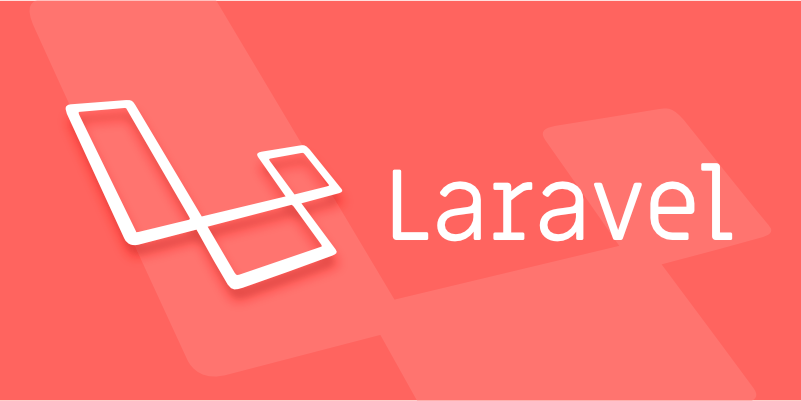Essential Security Practices for Protecting a Laravel Application
Jul 11, 2025 am 02:52 AMTo secure a Laravel application, you must keep Laravel and dependencies updated using composer update, use strong authentication and authorization with Laravel’s built-in tools and enforce middleware policies, protect against XSS, CSRF, and SQL injection by following best practices like input escaping and parameter binding, and secure your environment by managing .env files properly, setting APP_DEBUG=false in production, and avoiding storing secrets in code.

When it comes to securing a Laravel application, there are several essential practices you shouldn't skip. While Laravel itself is built with security in mind, developers still need to follow best practices to protect against common threats like SQL injection, cross-site scripting (XSS), and unauthorized access.

Keep Laravel and Dependencies Updated
One of the easiest yet most overlooked things is keeping your Laravel version and all packages up to date. Laravel regularly releases updates that include critical security patches.

- Use
composer updateregularly to pull in the latest stable versions. - Pay attention to Laravel’s official changelogs and security advisories.
- Tools like Sentry or Laravel Telescope can help monitor issues after deployment.
Outdated dependencies are one of the most common sources of vulnerabilities in PHP applications. It's not just about Laravel core — third-party packages used in your app should also be maintained and secure.
Use Strong Authentication and Authorization
Laravel provides solid tools for handling authentication out of the box, but how you implement and enforce policies matters.

- Always use Laravel's built-in authentication scaffolding (
php artisan make:auth) or Laravel Breeze/Sanctum when applicable. - Enforce password complexity rules using validation or packages like
password. - Make sure roles and permissions are properly enforced using middleware and policies.
For example, if you have an admin route, don’t just hide the link from non-admin users — actually block access at the middleware level. This prevents someone from simply typing the URL directly.
Also, consider enabling two-factor authentication (2FA) for sensitive accounts using Laravel Fortify or Jetstream.
Protect Against Common Web Vulnerabilities
Even with Laravel's protections, some security risks require extra attention:
-
XSS (Cross-Site Scripting) – Laravel’s Blade engine automatically escapes variables using double curly braces
{!! $var !!}. But avoid using triple brackets unless absolutely necessary, as they bypass escaping. -
CSRF (Cross-Site Request Forgery) – Laravel includes CSRF protection by default via middleware. Just make sure every POST/PUT/DELETE form includes
@csrf. - SQL Injection – Stick to Eloquent or Query Builder instead of writing raw SQL queries. If you must use raw expressions, always use parameter binding.
A classic mistake is concatenating user input into a query string, like this:
DB::select("SELECT * FROM users WHERE id = " . $_GET['id']);This opens the door for attackers to inject malicious SQL. Instead, bind parameters:
DB::select("SELECT * FROM users WHERE id = ?", [$_GET['id']]);Secure Your Environment and Configuration
The way you set up your environment and manage configuration files plays a big role in application security.
- Never commit
.envfiles to version control. Add them to.gitignore. - Use different environment files for local, staging, and production — especially for database credentials and API keys.
- Set
APP_DEBUG=falsein production. Leaving debug mode on exposes internal paths and system info.
Also, make sure your web server isn't serving sensitive files like .env, .git, or .env.backup. Configure your web root correctly — ideally pointing to the public/ directory only.
Another thing: never store secrets directly in code. Use environment variables and consider rotating them periodically.
That’s basically it. These steps aren’t overly complex, but they cover most of the major areas where Laravel apps get exposed. Stay consistent with these practices, and you’ll avoid a lot of trouble down the line.
The above is the detailed content of Essential Security Practices for Protecting a Laravel Application. For more information, please follow other related articles on the PHP Chinese website!

Hot AI Tools

Undress AI Tool
Undress images for free

Undresser.AI Undress
AI-powered app for creating realistic nude photos

AI Clothes Remover
Online AI tool for removing clothes from photos.

Clothoff.io
AI clothes remover

Video Face Swap
Swap faces in any video effortlessly with our completely free AI face swap tool!

Hot Article

Hot Tools

Notepad++7.3.1
Easy-to-use and free code editor

SublimeText3 Chinese version
Chinese version, very easy to use

Zend Studio 13.0.1
Powerful PHP integrated development environment

Dreamweaver CS6
Visual web development tools

SublimeText3 Mac version
God-level code editing software (SublimeText3)
 Working with pivot tables in Laravel Many-to-Many relationships
Jul 07, 2025 am 01:06 AM
Working with pivot tables in Laravel Many-to-Many relationships
Jul 07, 2025 am 01:06 AM
ToworkeffectivelywithpivottablesinLaravel,firstaccesspivotdatausingwithPivot()orwithTimestamps(),thenupdateentrieswithupdateExistingPivot(),managerelationshipsviadetach()andsync(),andusecustompivotmodelswhenneeded.1.UsewithPivot()toincludespecificcol
 Sending different types of notifications with Laravel
Jul 06, 2025 am 12:52 AM
Sending different types of notifications with Laravel
Jul 06, 2025 am 12:52 AM
Laravelprovidesacleanandflexiblewaytosendnotificationsviamultiplechannelslikeemail,SMS,in-appalerts,andpushnotifications.Youdefinenotificationchannelsinthevia()methodofanotificationclass,andimplementspecificmethodsliketoMail(),toDatabase(),ortoVonage
 Understanding Dependency Injection in Laravel?
Jul 05, 2025 am 02:01 AM
Understanding Dependency Injection in Laravel?
Jul 05, 2025 am 02:01 AM
Dependency injection automatically handles class dependencies through service containers in Laravel without manual new objects. Its core is constructor injection and method injection, such as automatically passing in the Request instance in the controller. Laravel parses dependencies through type prompts and recursively creates the required objects. The binding interface and implementation can be used by the service provider to use the bind method, or singleton to bind a singleton. When using it, you need to ensure type prompts, avoid constructor complications, use context bindings with caution, and understand automatic parsing rules. Mastering these can improve code flexibility and maintenance.
 Strategies for optimizing Laravel application performance
Jul 09, 2025 am 03:00 AM
Strategies for optimizing Laravel application performance
Jul 09, 2025 am 03:00 AM
Laravel performance optimization can improve application efficiency through four core directions. 1. Use the cache mechanism to reduce duplicate queries, store infrequently changing data through Cache::remember() and other methods to reduce database access frequency; 2. Optimize database from the model to query statements, avoid N 1 queries, specifying field queries, adding indexes, paging processing and reading and writing separation, and reduce bottlenecks; 3. Use time-consuming operations such as email sending and file exporting to queue asynchronous processing, use Supervisor to manage workers and set up retry mechanisms; 4. Use middleware and service providers reasonably to avoid complex logic and unnecessary initialization code, and delay loading of services to improve startup efficiency.
 Managing database state for testing in Laravel
Jul 13, 2025 am 03:08 AM
Managing database state for testing in Laravel
Jul 13, 2025 am 03:08 AM
Methods to manage database state in Laravel tests include using RefreshDatabase, selective seeding of data, careful use of transactions, and manual cleaning if necessary. 1. Use RefreshDatabasetrait to automatically migrate the database structure to ensure that each test is based on a clean database; 2. Use specific seeds to fill the necessary data and generate dynamic data in combination with the model factory; 3. Use DatabaseTransactionstrait to roll back the test changes, but pay attention to its limitations; 4. Manually truncate the table or reseed the database when it cannot be automatically cleaned. These methods are flexibly selected according to the type of test and environment to ensure the reliability and efficiency of the test.
 Choosing between Laravel Sanctum and Passport for API authentication
Jul 14, 2025 am 02:35 AM
Choosing between Laravel Sanctum and Passport for API authentication
Jul 14, 2025 am 02:35 AM
LaravelSanctum is suitable for simple, lightweight API certifications such as SPA or mobile applications, while Passport is suitable for scenarios where full OAuth2 functionality is required. 1. Sanctum provides token-based authentication, suitable for first-party clients; 2. Passport supports complex processes such as authorization codes and client credentials, suitable for third-party developers to access; 3. Sanctum installation and configuration are simpler and maintenance costs are low; 4. Passport functions are comprehensive but configuration is complex, suitable for platforms that require fine permission control. When selecting, you should determine whether the OAuth2 feature is required based on the project requirements.
 Implementing Database Transactions in Laravel?
Jul 08, 2025 am 01:02 AM
Implementing Database Transactions in Laravel?
Jul 08, 2025 am 01:02 AM
Laravel simplifies database transaction processing with built-in support. 1. Use the DB::transaction() method to automatically commit or rollback operations to ensure data integrity; 2. Support nested transactions and implement them through savepoints, but it is usually recommended to use a single transaction wrapper to avoid complexity; 3. Provide manual control methods such as beginTransaction(), commit() and rollBack(), suitable for scenarios that require more flexible processing; 4. Best practices include keeping transactions short, only using them when necessary, testing failures, and recording rollback information. Rationally choosing transaction management methods can help improve application reliability and performance.
 Handling HTTP Requests and Responses in Laravel.
Jul 16, 2025 am 03:21 AM
Handling HTTP Requests and Responses in Laravel.
Jul 16, 2025 am 03:21 AM
The core of handling HTTP requests and responses in Laravel is to master the acquisition of request data, response return and file upload. 1. When receiving request data, you can inject the Request instance through type prompts and use input() or magic methods to obtain fields, and combine validate() or form request classes for verification; 2. Return response supports strings, views, JSON, responses with status codes and headers and redirect operations; 3. When processing file uploads, you need to use the file() method and store() to store files. Before uploading, you should verify the file type and size, and the storage path can be saved to the database.






